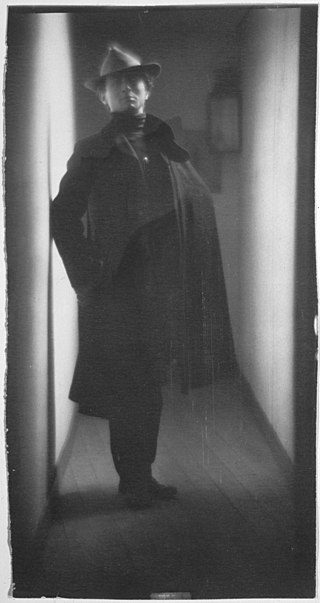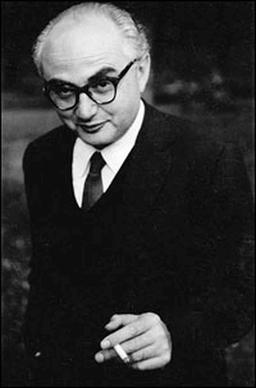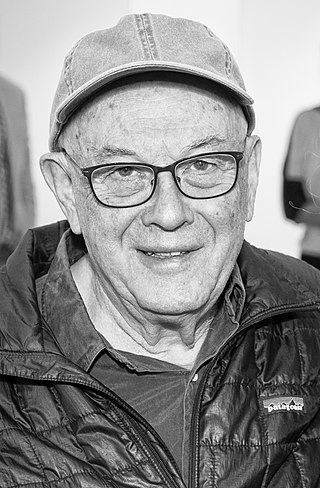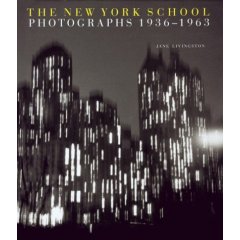Related Research Articles

Robert Capa was a Hungarian-American war photographer and photojournalist. He is considered by some to be the greatest combat and adventure photographer in history.

Edward Jean Steichen was a Luxembourgish American photographer, painter, and curator. He is considered among the most important figures in the history of photography.

Ernst Haas was an Austrian-American photojournalist and color photographer. During his 40-year career Haas trod the line between photojournalism and art photography. In addition to his coverage of events around the globe after World War II Haas was an early innovator in color photography. His images were carried by magazines like Life and Vogue and, in 1962, were the subject of the first single-artist exhibition of color photography at New York's Museum of Modern Art. He served as president of the cooperative Magnum Photos. His book of volcano photographs, The Creation (1971), remains one of the most successful photography books ever published, selling more than 350,000 copies.

Philippe Halsman was an American portrait photographer. He was born in Riga in the part of the Russian Empire which later became Latvia, and died in New York City.

David Seymour, or Chim, was a Polish photographer and photojournalist.

Eve Arnold, OBE (honorary), FRPS (honorary) was an American photojournalist, long-resident in the UK. She joined Magnum Photos agency in 1951, and became a full member in 1957. She was the first woman to join the agency. She frequently photographed Marilyn Monroe, including candid-style photos on the set of The Misfits (1961).

Fashion photography is a genre of photography that portrays clothing and other fashion items. This sometimes includes haute couture garments. It typically consists of a fashion photographer taking pictures of a dressed model in a photographic studio or an outside setting. It originated from the clothing and fashion industries, and while some fashion photography has been elevated as art, it is still primarily used commercially for clothing, perfumes and beauty products.

Bruce Landon Davidson is an American photographer, who has been a member of the Magnum Photos agency since 1958. His photographs, notably those taken in Harlem, New York City, have been widely exhibited and published. He is known for photographing communities that are usually hostile to outsiders.

Ted Croner was an American photographer, described as an influential member of the New York school of photography during the 1940s and 1950s. His images are said to represent the best example of this movement.
Herbert Gehr (1910–1983) was a Jewish German-American photographer and television director who was associated with Life magazine.

Ed Feingersh (1925–1961) studied photography under Alexey Brodovitch at the New School of Social Research. He later worked as a photojournalist for the Pix Publishing agency. His talent for available light photography under seemingly impossible conditions was well recognised. His pictures of Marilyn Monroe are his best known, but he was a prolific photojournalist throughout the 1950s. Two of his moody photographs of jazz performers were selected by Edward Steichen for MoMA’s world-touring The Family of Man exhibition.
Humanist Photography, also known as the School of Humanist Photography, manifests the Enlightenment philosophical system in social documentary practice based on a perception of social change. It emerged in the mid-twentieth-century and is associated most strongly with Europe, particularly France, where the upheavals of the two world wars originated, though it was a worldwide movement. It can be distinguished from photojournalism, with which it forms a sub-class of reportage, as it is concerned more broadly with everyday human experience, to witness mannerisms and customs, than with newsworthy events, though practitioners are conscious of conveying particular conditions and social trends, often, but not exclusively, concentrating on the underclasses or those disadvantaged by conflict, economic hardship or prejudice. Humanist photography "affirms the idea of a universal underlying human nature". Jean Claude Gautrand describes humanist photography as:
a lyrical trend, warm, fervent, and responsive to the sufferings of humanity [which] began to assert itself during the 1950s in Europe, particularly in France ... photographers dreamed of a world of mutual succour and compassion, encapsulated ideally in a solicitous vision.
Margery Lewis (Smith) was an American photographer active from the 1940s to the 1970s.
William Vandivert was an American photographer, co-founder in 1947 of the agency Magnum Photos.
Ewing Krainin was an American magazine, advertising and travel photographer active 1940s-1970s.
Constantin Joffé (1910–1992) was a Russian-French-American fashion and advertising photographer who worked for the magazines Vogue and Glamor in the 1940s and 1950s, during their period of widest circulation.
Don Ornitz was an American photographer.
Jacob Lofman was a Polish-born American photojournalist.
Lisa Larsen (1922-1959) was a pioneering American woman photojournalist.
Guy Gillette was an American 20th century photojournalist.
References
- ↑ Vogue; New York Vol. 96, Iss. 10, (Nov 15, 1940): 92, 93
- ↑ ”"My hotel is in the center of the Quartier Latin where all aspiring but broke photographers should be—it's fairly reasonable compared to hotels in the fancier sections of Paris but still a lot more than New York. Prices have tripled here since the end of 1945. "London on the other hand remains about the same. There is less to eat there but at least everyone gets the same amount on their rations. In France, one can buy anything that one desires-if one has the money. The black market is no longer black, but grey, since almost everyone has to deal in it in order to live —sad but true. “If any photographers are headed this way, tell them to bring everything they need with them-film, bulbs, lenses, tripods, and paper. Also include tea, coffee, and sugar." Popular Photography, June 1947, Vol. 20, No. 6, 145-6
- ↑ "There is no Kodachrome being processed in Paris except 35 mm stuff and that only once a month. London is processing up to and including 4x5 or 4x6. However, their processing is now showing an excess of red (during the war it was over on the yellow side). Life can certainly let complicated here!’ Popular Photography, June 1947, Vol. 20, No. 6, 145-6
- ↑ "Paris pay and Paris prices are further apart than their American cousins, according to reports from CARL PERUTZ who is busily free-lancing for French picture magazines. A color cover on assignment brings 10,000 francs, Perutz says, or Iess than $85. And the difficulties are enormous. He writes that he and several other photographers are shooting Ansco color and Ektachrome, and processing it themselves, with good results. But available paper Is heartbreakingly bad, and the water so poor that prints and film have to be run through a dilute hydrochloric acid solution to prevent calcium deposits in drying. There are no model agencies in Paris, of all things. When Perutz manages to line up a model, the couturier is having a showing and can't lend clothes. When the clothes are available, the model isn't. When both are ready, it rains. "What should be a one-day job sometimes takes two weeks,” he moans. Color film costs 2.000 francs a roll, against one dollar, or 120 francs, U. S. price. Paris, like every other place on the globe, is producing a strobe unit. The first test. models seem to be quite good, according to Perutz, fire about 1,500 flashes before recharging, weigh roughly 18 pounds, recharge on 110-125 volts, and cost-somewhere around 50,000 francs." Popular Photography, Aug 1947, Vol. 21, No. 2; 166
- ↑ Jonathan Faiers, Mary Westerman Bulgarella (eds.) Colors in Fashion, Bloomsbury Publishing, 2016, ISBN 1474273696
- ↑ Koda, Harold; James, Charles, -1978, (designer.); Reeder, Jan Glier, (author.); Scaturro, Sarah, (contributor.); Petersen, Glenn, (contributor.); Rucci, Ralph, (author of introduction, etc.) (2014), Charles James : beyond fashion, The Metropolitan Museum of Art, ISBN 978-0-300-20436-0
{{citation}}:|author3=has generic name (help)CS1 maint: multiple names: authors list (link) CS1 maint: numeric names: authors list (link) - ↑ LIFE, 2 May 1949, ISSN 0024-3019, Time Inc. 33
- ↑ LIFE, 10 Jul 1950, Vol. 29, No. 2, ISSN 0024-3019, Time Inc, 17
- ↑ Mayo, Gael Elton The Magnum Photographic Group: The memories of a friend and colleague in Apollo, Sep 1, 1989; 130, 331.
- ↑ e.g. Squibb Pharmaceutical, see Wirz, Adolf 'art directors club of new york: 43rd Annual Exhibition of Advertising and Editorial Art 1964', in Graphis, Nov 1, 1964; 452
- ↑ Morris, John G. (John Godfrey) (1998), Get the picture : a personal history of photojournalism (1st ed.), Random House, p. 109, ISBN 978-0-679-45258-4
- ↑ Marilyn wearing a white, floppy hat
- ↑ Nickens, Christopher; Zeno, George (2012), Marilyn in fashion : the enduring influence of Marilyn Monroe, Running, ISBN 978-0-7624-4332-1
- ↑ Variety Oct 1, 1952; 188, 4
- ↑ 'BIRTHS' Variety, May 27, 1953; pg. 79
- ↑
- Steichen, Edward & Steichen, Edward, 1879-1973, (organizer.) & Sandburg, Carl, 1878-1967, (writer of foreword.) & Norman, Dorothy, 1905-1997, (writer of added text.) & Lionni, Leo, 1910-1999, (book designer.) et al. (1955). The family of man : the photographic exhibition. Published for the Museum of Modern Art by Simon and Schuster in collaboration with the Maco Magazine Corporation, [New York]
- ↑ New York Magazine, 18 Feb 1985, Vol. 18, No. 7 ISSN 0028-7369, New York Media, LLC. 127.